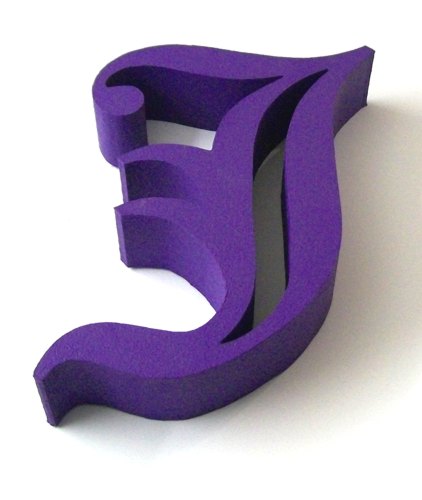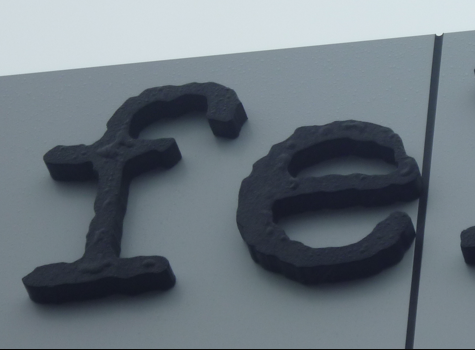Activity Feed › Forums › Sign Making Discussions › General Sign Topics › Glueing polystyrene letters to dibond – outdoors.
-
Glueing polystyrene letters to dibond – outdoors.
Posted by Simon Worrall on April 10, 2013 at 9:02 pmHi
I have a customer who really wants 50mm thick cut out letters about 500mm high made from high density polystyrene or similar.
The fascia surface is dibond.
His landlord will not allow any penetration of the surface. So we have to glue it.
The letters will be coated to give them strength and colour.
There is no overhang, so they will be getting whatever the weather throws at them.
My question is, what combination of paint and glue will work best to give them longest outdoor life?Simon Worrall replied 10 years, 8 months ago 8 Members · 23 Replies -
23 Replies
-
Hi Simon,
Some people who make polystyrene letters coat them with an expoxy resin to harden the surface and make them more suitable for outside useage while others simply paint them with a couple of coats of exterior paint (dulux weathershield etc) which hardens them as well as giving you the colour. To stick them I would use a bit of strong double sided tape for initial grab with a good covering of clear drying wood glue ( which doesn’t eat into the poly ).
I’d probably do a little test run first though as all the poly we do is for short term usage, but I’ve never had any come down. -
Rosco produce a coating called foam coat, used in theme parks, fire proofs and hardens the polystyrene like a rock, this can then be painted with gloss paint which would eat into the foam without coating, wooden stuts can be inserted into the back of the letters which when coated become partof the letter and can then be screwed into the back of the sub straight or a two part expoxy resin which without the coating would eat into the foam.
-
Thanks guys. I did a search for foam coat, Graham, and it is available in NZ, so I will order up some of that.
Paul when you say wood glue do you mean PVA glue?Simon.
-
This is what we use
http://www.wickes.co.uk/weatherproof-wo … vt/240035/Also ordered a different version of foam coat (comes in powdered form which you mix with water) so will try it out when I get 5mins.
Let us know how you get on.Paul
-
Foam coat is used in larger outdoor projects and lasts for many years designed specifically for theme parks and the Theatre industry, rock hard, similar to a very hard resin , you can hit it with a hammer after it has cured. Most of the detailed rock formations, brick walls and creatures made from soft foam are coated in this stuff, very expensive when compared with pva, but as the old saying goes you get what you pay for.
-
I just got the Foam Coat in today. It is very thick and heavy, and needs to be mixed up with a drill paint mixer attachment.
I have cut out the poly letters, and I am ready to coat them.
What is the best way to apply it? Does it sag if applied to a vertical face? Can it be done in one coat?Simon.
-
Simon, will be interested to see how you get on with Foam Coat.
Regards
Graham -
You need a gravity feed spray gun supplied by the same company that supplied the liquid. I had a go with a similar material but could not get the hang of it so went back to using waterproof PVA to seal the letters and then polyester resin to coat them. Polystyrene letters if treated right can make a very affordable method of producing 3D letters.
-
We always used Evo-Stik 584 for polystyrene. It doesn’t melt it. A bit hard to find but I think Flints do it (and an alternative I think)
-
great lead!
I have dabbled with something called plasti-dip available here in the UK.
You can apply with a brush but you have to put plenty of coats on and It didnt give me the desired result ….but what you have described with foam coat giving a hard coat finish sound just what Ive been looking for:) -
Here is the final result.
50mm thick HD Polystyrene letters cut with a hot wire, and sprayed with foam coat using a gravity fed hopper spray gun. they got about 1-2mm thick coating. Then they were sprayed black.
The customer decided to install them himself, to save some money,
I cut him a stencil to place the letters and put some 3m VHB tape on the back to hold them in place while the glue dried. He used "no more nails" to glue them up.
I think he did a pretty good job placing the letters. I just hope he kept it all clean and prepped it properly. -
WOW! a scissor lift that comes out of the engine bay of your car….I want one
Good job with the letters Simon,btw
-
quote Martin Cole:WOW! a scissor lift that comes out of the engine bay of your car….I want one
😀 😀 😀
-
Hi all.
You might remember this thread- polystyrene letters which I coated with foam coat and then painted with black acrylic paint. They were stuck onto ACM panels using VHB tape.I have just had an email from the customer with a photograph – the letters are starting to bubble. THey have only been up a couple of months. It has rained a lot in that time, but I am a little surprised at the picture. I have not gone up there to inspect, rather I am just going to remake the letters and remove the old ones and install the new ones in one go.
What could have gone wrong? I think I followed all the instructions given. Could it be the paint I used is not compatible with the foam coat? What is the proper paint to use on top of foam coat?
Simon
-
If that happened on a wall I had painted the first thing I would do is get him to pinprick the bubbles and see if there is moisture behind. It could be that it is getting behind the paint film somehow.
The other possibility is a chemical reaction between the paint types.It’s a ‘need more info’ situation Simon.
-
Yes Harry you are right.
If I was to get up there it would involve a large scissor lift and most of a day to get up to Christchurch and back, and then once more when I have fixed the problem. I just figure it is cheaper to just redo the job, properly this time, and change out the letters all in one go. I am pretty sure it is a compatibility issue with the paint and the foam coat not bonding properly. As you say, there will probably be water in those bubbles. -
The great thing about foam coat, is the barrier it places between the foam and the paint, the bubbling will be from the paint blistering and as Harry said, the water ingress in behind the paint is the most likely cause. The foam coat should have properly out gassed prior to painting ( rock hard) so unless the coat was still curing when the paint was applied it should have happened quickly not months down the line.
-
So Graham, what is the appropriate time to leave the foam coat to dry, or out gas, before applying paint? I am beginning to think we painted too soon.
Also, is acrylic paint suitable?Simon.
-
I haven’t used Foam Coat but I suspect that it hardens to a plastic finish. I would never use an accrylic over something like that as it can sweat and bubble with humidity levels without water ingress. May be your problem here. I would use an oil based primer and finish.
-
To outgas properly , I would have left it for about 48 hours, the choice of paint as Harry said is also critcal ,I would suggest a test piece, using various brands and types, prior to final choice, a water based paint with a glaze would be the safest bet for sure but undercoating and then a gloss would also make it bomb proof.
-
Actually the finish looks for all the world like plaster.
But point taken, oil based primer and paint would maybe have been more appropriate.Simon
Log in to reply.





